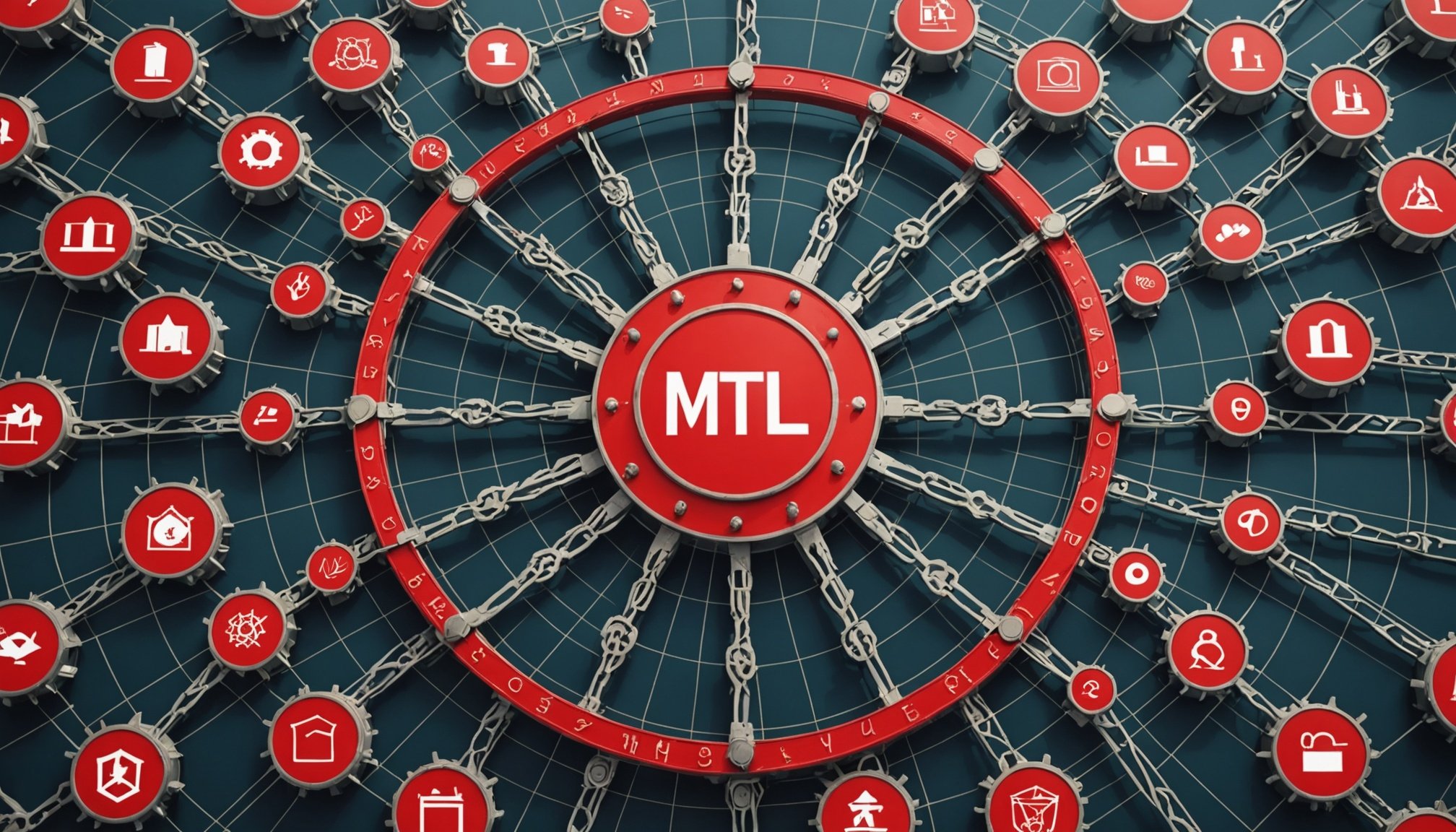Understanding mTLS
In the landscape of microservices, mTLS plays a crucial role in ensuring secure communication between services. At its core, mutual TLS (Transport Layer Security) is an enhancement of the traditional TLS protocol. While TLS guarantees encryption of communication between a client and server, mTLS adds an additional layer of security through mutual authentication. This means both parties in the communication verify each other’s identity before data exchange, reinforcing security tremendously.
mTLS vs Traditional TLS
Traditional TLS focuses primarily on server authentication; clients ensure they’re communicating with the correct server by checking its certificate. However, mTLS requires both the client and server to present and verify certificates. This mutual process is vital in a microservices architecture, as it allows services within the ecosystem to trust the authenticity of peers unequivocally.
Have you seen this : Unlocking Data Transformation: A Comprehensive Guide to Creating ETL Jobs with AWS Glue
The importance of mutual authentication cannot be overstated in environments where distributed services frequently interact. It mitigates risks of man-in-the-middle attacks and ensures only authorized services can communicate, maintaining the integrity of the system. Therefore, adopting mTLS is a fundamental step for organizations aiming to fortify their service communications while maintaining robust security standards across their infrastructure.
Importance of mTLS in Microservices
In today’s evolving threat landscape, securing microservices is a paramount concern. The architecture resilience of modern systems hinges significantly on robust security measures, given their interconnected nature.
Topic to read : Mastering Continuous Deployment in Microservices: A Comprehensive Guide to Using Spinnaker
Microservices security faces unique challenges. With numerous independent, yet interdependent, services, ensuring data integrity and confidentiality is crucial. Mutual Transport Layer Security (mTLS) is a cornerstone technique for this purpose, offering extraordinary data protection by encrypting data during transit. As information travels between services, mTLS ensures that only authenticated entities can decrypt and understand the transmitted data.
The reliability of service-to-service communication is vital for maintaining the seamless operation of applications. Incorporating mTLS reinforces this by authenticating all services involved in communication. Each service must present a valid certificate that the other service respects and verifies, ensuring only legitimate communication occurs within the network.
mTLS does more than just improve security; it bolsters the resilience of a microservices architecture. By preventing unauthorized access and maintaining data integrity, it adds a layer of robustness against potential breaches. This enhances trust, allowing microservices environments to function efficiently without compromise, fostering an ecosystem where services collaborate securely and effectively.
Implementation of mTLS in Kubernetes
Implementing mTLS in Kubernetes is essential for safeguarding communication between services. It adds an extra layer of Kubernetes security, ensuring only authenticated entities can communicate.
Preparing the Environment
Before diving into the setup, ensure your environment is equipped with necessary tools. Tools like Helm charts simplify the deployment process. Begin by installing Helm and service mesh solutions like Istio. A properly configured environment sets the stage for flawless mTLS integration. Focus on compatibility, so other infrastructure components are seamlessly integrated.
Configuring Certificates
Certificates are the backbone of mTLS. Generate root certificates and keys to establish identity. Utilize a service mesh to manage certificates efficiently, ensuring all pods adhere to expected security protocols. Automated certificate renewal is crucial to maintain continuous Kubernetes security without manual intervention.
Deploying mTLS in a Kubernetes Cluster
Deployment involves methodical steps:
- Install necessary tools using Helm for efficient management.
- Leverage Helm charts to automate deployment, reducing human error.
- Update service configurations to enable mTLS, protecting inter-service communication.
When complete, the cluster will use mTLS for encrypted data transfer, ensuring both confidentiality and integrity. This enhancement in communication security reassures that services interact securely and reliably within the Kubernetes environment.
Best Practices for mTLS in Kubernetes
Implementing mTLS best practices in Kubernetes is pivotal for maintaining robust security protocols. The management of certificates and keys is the cornerstone of securing mTLS. Ensure that all certificates are rotated regularly to minimize the risk of compromise. Utilize tools like cert-manager for automated certificate management, simplifying the process and reducing human error.
Monitoring and logging mTLS connections are essential for tracking potential issues. Enable detailed logging of all mTLS sessions to capture any anomalies or failures. Employ Kubernetes-native tools, such as Prometheus, to keep an eye on connection metrics. This proactive approach ensures you’re alerted to unauthorized access attempts or configuration errors before they escalate.
Moreover, conducting regular security audits is crucial. These audits should scrutinize current mTLS configurations to identify potential vulnerabilities or outdated practices. Additionally, ensure that security updates are applied consistently to your Kubernetes environment. Staying abreast of the latest security patches fortifies your mTLS settings against emerging threats.
In summary, by diligently managing certificates, monitoring connections, and conducting routine audits, you can harness mTLS to its full potential, fortifying your Kubernetes ecosystem against security threats while ensuring optimal operational integrity.
Common Challenges and Troubleshooting
Implementing mTLS can sometimes be fraught with challenges. One of the most common issues is misconfiguration, which often results in connection failures. This can occur if certificates aren’t correctly set up or if there is a mismatch between client and server expectations.
To effectively diagnose mTLS problems, it’s crucial to use the right tools. Network traffic analyzers like Wireshark can be invaluable in monitoring and identifying where errors occur. Additionally, utilizing log files can provide detailed insights into handshake failures and certificate validation errors.
When it comes to error handling, understanding and interpreting error messages is essential. For example, an error message like “certificate verify failed” might indicate an expired certificate or trust store misconfiguration. By updating the certificates and ensuring that all trusted roots are in place, these issues can often be resolved.
Troubleshooting is an ongoing process that may require addressing multiple problem layers. Keeping environments aligned with consistent configurations across development, testing, and production can help mitigate some of the common failures. Often, a systematic approach, addressing one issue at a time and confirming its resolution, leads to the successful implementation of mTLS.
Case Studies and Real-world Applications
Diving into mTLS case studies reveals its transformative potential across industries. One standout example is its deployment in the financial sector. Here, mTLS ensures secure communication between microservices, safeguarding sensitive data like banking transactions. This industry exemplifies mTLS’s capability in environments demanding high security.
Real-world deployment scenarios in the healthcare industry showcase mTLS’s importance. Agencies integrating various health services have leveraged mTLS to secure patient data transfer between applications. This approach not just enhances data integrity, but also meets strict regulatory standards.
A pivotal lesson from these implementations is the critical role of certificates. Proper management ensures continuous, secure communication, avoiding outages and service disruptions. It is vital for organisations to have robust certificate lifecycle management strategies.
As for future trends, we see an increased focus on securing microservices. With the rise of complex networks, integrating mTLS with other secure network protocols will enhance layered security measures. The shift towards cloud-native environments further underscores mTLS’s role in safeguarding distributed systems. By studying these successful industry use cases, businesses can better navigate the challenges of deploying mTLS, enhancing security protocols across sectors.











